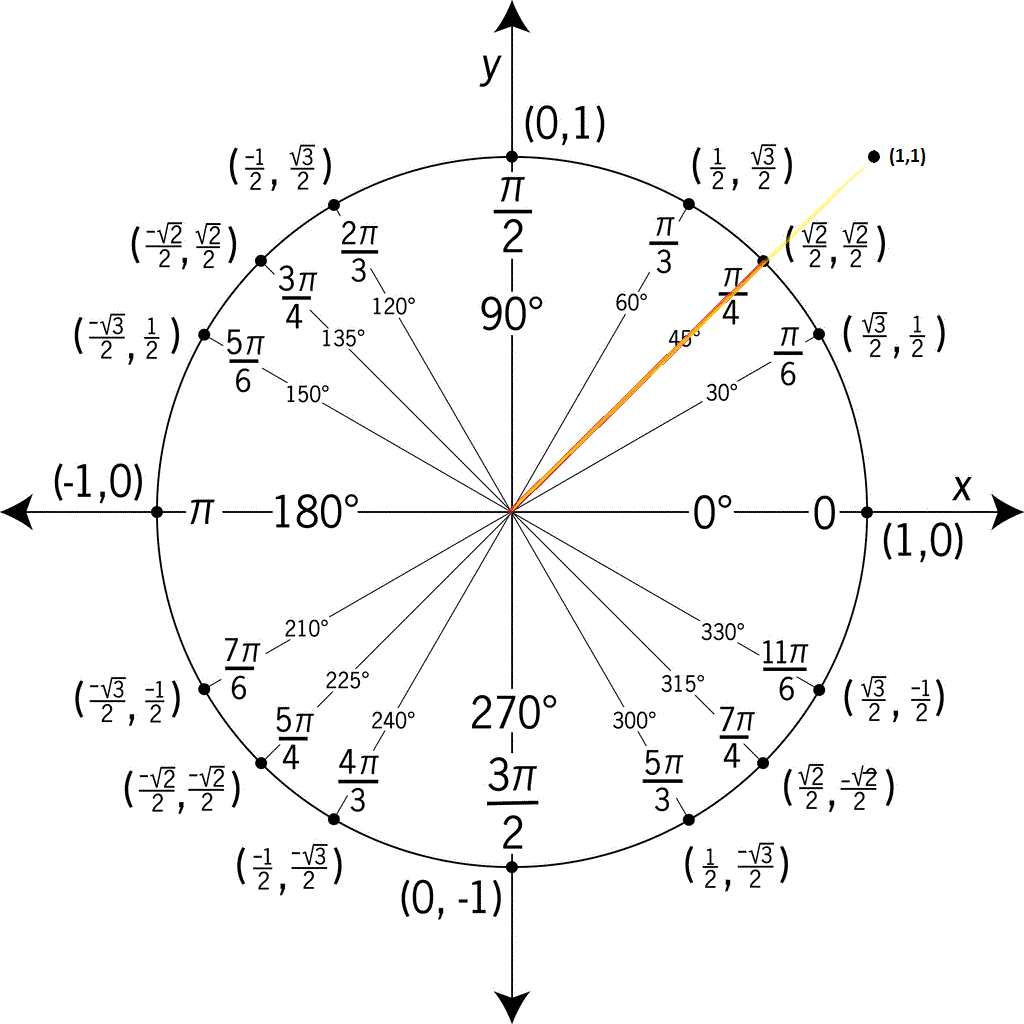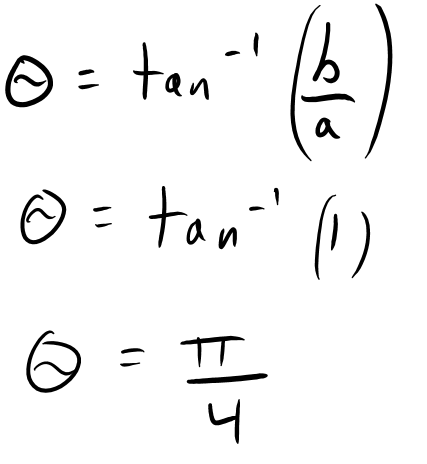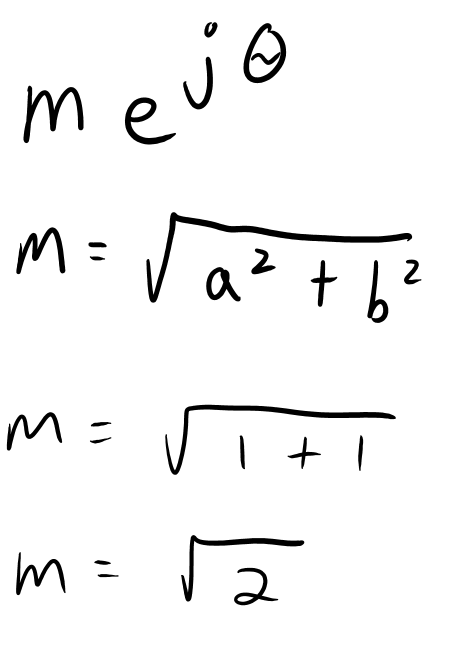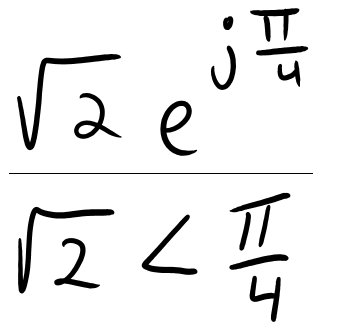Complex Numbers and Phasor Notation

Whenever I was first learning about complex numbers, it seemed like I could never quite find all of the information I was looking for in one place. This article discusses complex numbers as vectors in various forms, including rectangular, exponential, and polar (called phasor) notation. The unit circle will be referred to help explain concepts.
Let's talk about phasors. No, not the things on that sci-fi series. I'm talking about vectors in all of their forms today. If you're reading this, I'll assume that you already have some knowledge of complex numbers and the unit circle.
NOTE: Being an electrical engineer, I use "j" instead of "i" when referring to the imaginary plane. If you're a mathematician or physicist, squint a little. Why do EEs like to use "j" so much? Well, "i" means current already, and we don't like to be confused.
First, we're going to look at a complex number. In this case, we'll use 1+j. Easy enough. If we plot that on the unit circle where the x-axis corresponds to real numbers and the y-axis corresponds to imaginary numbers, we'll get a vector running at 45 degrees from 0. Both the sine and cosine of the unit vector along this angle are sqrt(2)/2

Alright, so we've plotted 1+j. We already know the angle is 45 degrees which we also know corresponds to pi/4 radians based on our knowledge of the unit circle.
Let's say that it wasn't one of our memorized angles. We'd use this equation:

Exponential notation can be calculated by determining the magnitude of our vector and multiplying it by Euler's constant raised to j * theta, where theta is the vector's angle.
For calculating the magnitude of a vector, we use our magnitude equation:

At this point, we have everything we need for our final answer:

Alright, that's pretty cool. Let's say we want to convert it back to rectangular form.
That's the easiest part. Remembering our magnitude and angle from above...
The real component is: m * cos(theta)
The imaginary component is: m * sin(theta)
All done!




Member discussion